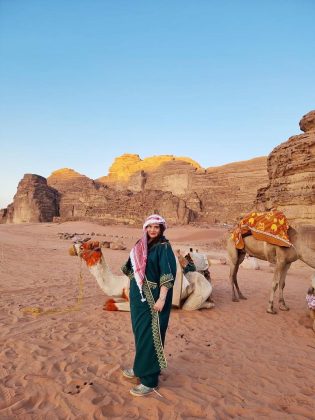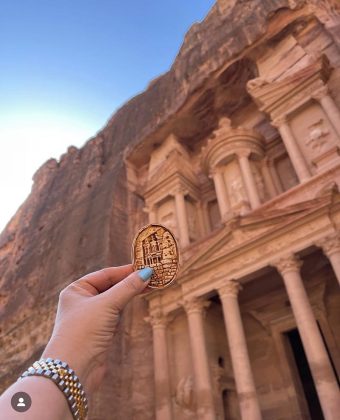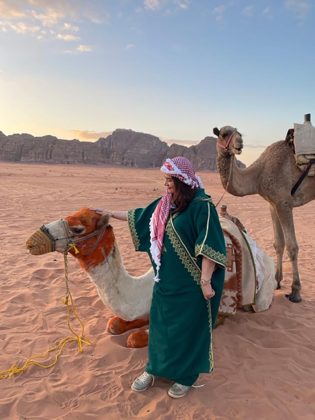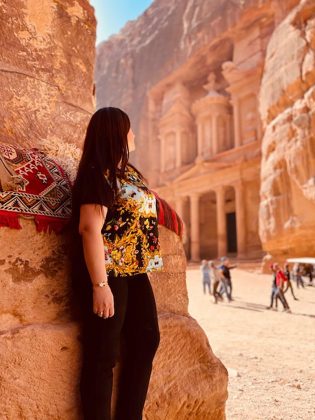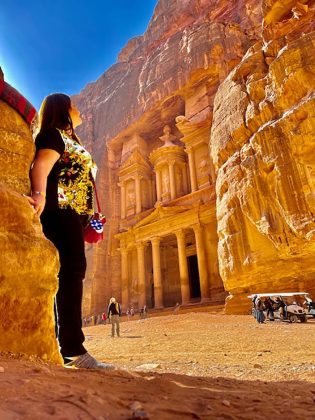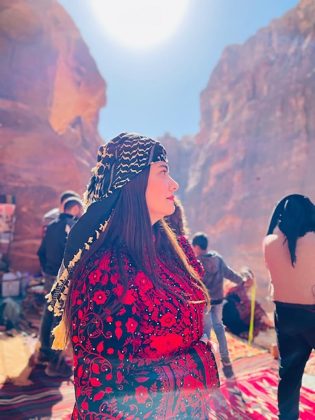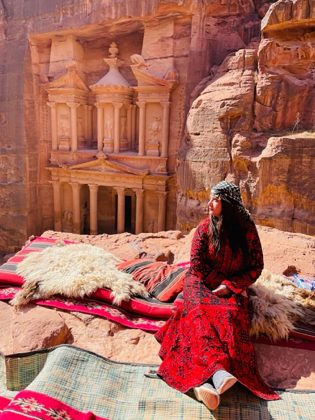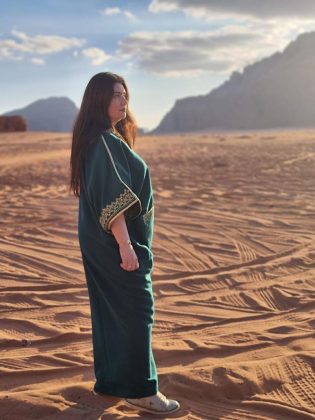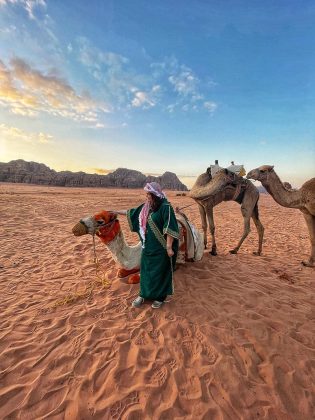Valley of the Moon, Petra a journey through sands of time
Alnashraaldawlia
Special to The Times Kuwait By Noura Khan
Dreamy, fantasy atmosphere, pink sands, sparkling stars, a beautiful calm that clears your mind, a place where everything around you makes you feel that you are in an Arabian legendary tale from the Medieval Ages. This unbelievably magical experience of a journey through time, between Wadi Rum (Valley of the Moon) and Petra in Jordan, was made possible through a gracious invitation from the Jordan Tourism Authority.
Given that most of my holidays abroad are spent in luxury hotels and resorts, I have never had the experience of staying out in the open desert on any of my trips before; yes, despite being from a largely desert country like Kuwait. However, noticing my initial hesitation and fear in taking up the invitation, Khaled Al-Kilani from the Jordan Tourism Authority assured me that luxury accommodation is now available in Wadi Rum, right in the middle of a desert, if I prefer; but that the experience of staying out in the desert would be something special that I should not miss. And, his words proved to be true.
Wadi Rum, a desert reserve located in the southern part of Jordan and often called the Valley of the Moon, is famous for its red and pink sands, stunning natural arches and mountains, and prehistoric rock carvings, in addition to being less than four hours drive from Amman, and less than two hours from Petra.
Wadi Rum is an incomparably charming destination, and it is still not crowded compared to Petra, which makes it a unique tourist destination for those looking for tranquility in the bosom of nature. There is no internet connection in most of the Wadi Rum desert camps. Also, there is no cell phone signal in some parts of the desert. But luxury camps can provide an internet connection, so if this is really an issue for you, ask before booking.


Everything in Wadi Rum has its own character, starting with the taste of a cup of tea that is prepared on charcoal, and ending with the experience of the domes, whose designs simulate the future of humanity on Mars.
There are many accommodation options in Wadi Rum, from traditional bedouin tents to domes with a magical design consisting of glass walls with panoramic views of the desert and the surrounding mountains. I opted for the dome stay.
When you stay in this dome, you must wake up early with the sunrise so as not to miss the most beautiful scenes of photographing the valley at sunrise, as the wonderful colors of the desert are most impressive in the early morning and just before sunset. I can confirm that I captured the most beautiful scenes in Wadi Rum during sunrise and also during sunset.
I stayed for two nights at Wadi Rum, but it is possible to stay longer if you want to try all the activities and experiences the site offers. A must-try while at this place is mountain climbing and visiting the strange rock formations that abound in the region. One of the most famous of these rocks is the Rock Bridge.
You can ride horses and camels, or take safari trips along the desert sands and dunes, on tours between the tall mountains through four-wheel drive vehicles, and you can coordinate all these trips from the convenience of your residence camp with ease and professionalism.
One of the most beautiful activities is watching the mountain ranges and desert sands from the sky on a balloon flight. I could not try this activity because it depends on weather conditions, wind speed and direction, so this activity may not always be available throughout the year.
At sunset, you have other options in the valley. There are beautiful musical evenings that are held in which you enjoy bedouin songs and traditional food, or enjoy drinking traditional tea and smoking a hookah under the glitter of the stars. Did you know that this place has been the filming location of several films, including Lawrence of Arabia, and that it has been on the list of UNESCO World Heritage Sites since 1985?
A visit to Wadi Rum is considered one of the most beautiful experiences that combines the past and the present and takes people back to the roots of history and the authenticity of bedouin life. You have to try this experience one day.
After the end of my adventure in Wadi Rum, I apparently fell in love with the desert experience, so I next headed to Petra. The city of Petra, the capital of the Nabatean Arabs, is one of the most famous archaeological sites in the world. It is located 240 km south of the Jordanian capital Amman, and 120 km north of the city of Aqaba, on the Red Sea coast. Petra is undoubtedly Jordan’s most valuable treasure and its top tourist attraction and is also one of the new Seven Wonders of the World.
I recommend staying at least for one night in Petra as the atmosphere at night is something superb. An enjoyable experience is the Petra Night Show, which is an enchanting way to see a side of the rocky city by candlelight and discover the ancient city. This unique experience begins with a walk along the ‘Siq’ corridor to the facade of ‘The Treasury’, with the pathway lit by 1,500 candles.
I enjoyed visiting Petra during the day and I wore the bedouin traditional costume, and all thanks to the tour guide Rawan Sahawneh from the Jordan Tourism Authority for helping me choose the details of the bedouin costumes and wearing the Jordanian ghutra and climbing the rocks to sit in front of the Treasury facade to take memorial photos, an unforgettable experience.
The history of the Treasury building dates back to the Nabataean civilization and is carved right out of the surrounding rock. The building is one of the most famous and important landmarks of the city and the bedouins gave it this name because they believed that the jar at the top contained a treasure.
There are many attractions that you should visit in Petra, so it is necessary to stay for a night or two. Among the sites to visit are the colonnaded street, considered one of the most beautiful monuments of Petra. Three Byzantine churches were built to the north of the street because of its commercial importance in ancient days. Another fun experience that I attended in Petra was a cooking course for preparing ‘Mansaf’, one of the most famous Jordanian dishes. Petra is also known as the Pink City due to the distinctive color of its stone, and UNESCO describes the place as “one of the most precious cultural assets of humanity’s cultural heritage.”

Noura Khan, a travel influencer and content creator, is a Kuwaiti national, holds a degree in law from Kuwait University and has worked as a journalist prior to taking up a position in the government. In 2018 she started blogging on travel and has visited more than 57 countries since. She has more than 54K followers and her blog post @nourajtraveller is well appreciated for content and travel information. Noura writes exclusively for The Times Kuwait on her travel visits.

